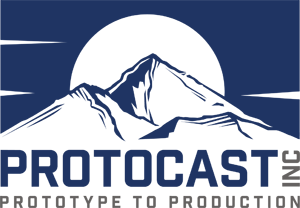October 15, 2024 | Protocast Inc
gravity die casting ohio – Resources
Gravity Die Casting Ohio
Definition of Gravity Die Casting
At Protocast Inc., we specialize in a myriad of casting processes, among which gravity die casting holds a significant place. Gravity die casting, a time-honored method, involves pouring molten metal into a permanent mold under the force of gravity, without the use of high pressure. This technique is revered for its ability to produce high-quality, dense castings with good dimensional accuracy.
Advantages of Gravity Die Casting
One of the primary benefits of gravity die casting is its excellent mechanical properties. Given the process allows for better control over cooling rates, the resultant castings often exhibit superior strength and ductility. Additionally, the method’s reliance on reusable molds means it can be more cost-effective for medium to large production runs, offering both consistency and longevity in tooling investments.
Applications of Gravity Die Casting
As a versatile process, gravity die casting finds applications in a variety of industries. From automotive components like engine blocks and wheels to parts in consumer electronics and even artwork, the range of products that can be produced is vast. This adaptability makes it an attractive option for designers and engineers seeking precision and durability.
Comparison with Other Casting Methods
When comparing gravity die casting to other methods such as sand casting or high-pressure die casting, each has its unique advantages. High-pressure die casting, for instance, is faster but often more expensive due to the higher costs of machinery and dies. Sand casting, while versatile and inexpensive for small batches, does not match the dimensional accuracy or surface finish achievable with gravity die casting.
Materials Commonly Used in Gravity Die Casting
The choice of materials is critical in any casting process. Aluminum alloys are the most popular in gravity die casting due to their lightweight, high strength, and excellent thermal conductivity. Magnesium and zinc alloys are also used, offering their own set of advantages such as lower density and good corrosion resistance, respectively.
Process of Gravity Die Casting
The process of gravity die casting at Protocast Inc. involves several key steps. Initially, the die is heated and coated with a release agent to ensure smooth demolding. Molten metal is then poured into the die, allowed to solidify, and then ejected or broken out once cooling has occurred. This process can be precisely controlled to manage the microstructure of the metal, optimizing the properties of the final casting.
Equipment Used in Gravity Die Casting
In terms of equipment, gravity die casting requires a furnace for melting metal, a die casting machine, and the dies themselves. At Protocast Inc., we maintain state-of-the-art facilities that allow for efficient and quality-controlled casting processes, ensuring we meet the exacting standards of our OEM clients.
Quality Control in Gravity Die Casting
Quality control is paramount in gravity die casting. Each phase of the casting process is monitored closely, from the inspection of incoming raw materials to the final dimensional and structural evaluation of the cast parts. Our ISO 9001:2015 certification highlights our commitment to maintaining the highest standards of quality in every project we undertake.
Environmental Considerations for Gravity Die Casting
Environmental sustainability is an increasingly important consideration in manufacturing. Gravity die casting offers some environmental benefits, such as the reusability of molds and the potential for recycling the metals used. At Protocast Inc., we continuously seek ways to minimize waste and reduce energy consumption in our casting processes.
Future Trends in Gravity Die Casting
The future of gravity die casting looks promising with advancements in materials science and manufacturing technologies. Innovations such as computer simulation for predicting casting outcomes and the development of more sustainable alloys are driving the industry forward. At Protocast Inc., we are excited to embrace these changes, ensuring we remain “A Mile Above Other Foundries” in delivering cutting-edge casting solutions.
In conclusion, gravity die
Additional Resources:
Painters Near Me
At Pro Classic Painting, we understand the importance of finding reliable painters near you to transform your space with precision and care. With over 40 years of experience serving Aurora, CO, and the surrounding areas, our team led by Eric vonderLinden brings a wealth of knowledge and expertise to every project. Our commitment to professionalism and customer satisfaction sets us apart, ensuring that each painting job is executed with attention to detail and personalized service tailored to your specific needs. Whether you’re looking for interior or exterior painting services in Denver, Aurora, Parker, or beyond, our high standards of quality… Painters near me
Professional Painting Services in Plano
Plano Painting Services
Revitalize your home or office with professional painting in Plano. Whether you're looking to refresh the interior, boost curb appeal, or maintain a polished business environment, expert painting services provide high-quality results. Discover the benefits of hiring professionals for a fast, efficient, and durable paint job that enhances the aesthetic and value of your property for years to come. Professional Painting Services in Plano


